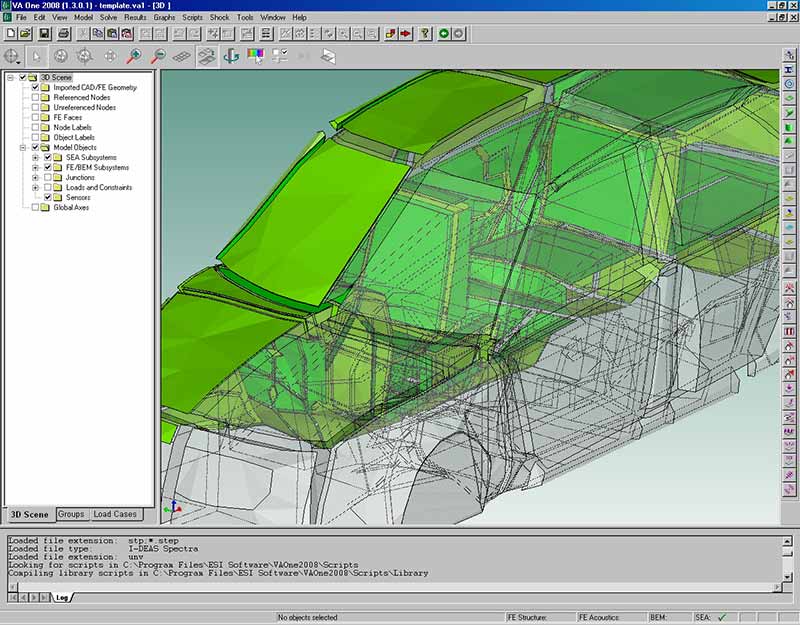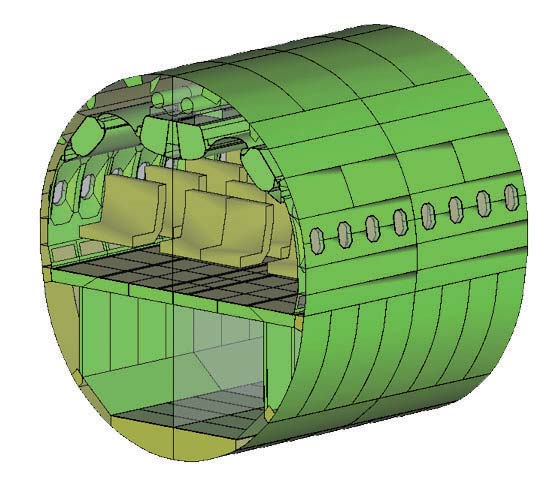The Statistical Energy Analysis (SEA) module of VA One is the evolution of the industry standard software for mid and high frequency noise and vibration design, AutoSEA2. The SEA simulation module is used routinely in virtually every industry for which noise and vibration are of concern. Find out why so many companies have made ESI’s software a standard part of their noise and vibration design process as well as in their statistical energy analysis.

Benefits
- Create efficient system level models of noise and vibration transmission in large complex systems at mid and high frequencies
- Identify key transmission paths and rank sources early in the design process
- Investigate the effects of noise control treatments (poro-elastic treatments, isolators and localized damping layers)
- Interactive design environment (create complex models that solve in seconds on a laptop – answer noise and vibration questions interactively in “real time”; spend your time solving noise and vibration problems rather than differential equations)
Features
- Full library of materials (isotropic, orthotropic, viscoelastic, foam/fiber etc.)
- Full library of physical properties (uniform, ribbed, laminate, composite etc.)
- Complete library of SEA subsystems (beams, plates, shells, cylinders, ducts, acoustic cavities, semi-infinite fluids etc.) and structural and acoustic loads
- Account for pressurization, fluid loading, stiffening from curvature
- Automatic calculation of SEA coupling loss factors for point, line and area junctions based on full-wave transmission theory (and advanced radiation efficiency algorithms)
- Easy to use 3D modeling environment, visibility tree and object oriented database simplify model creation, model management and diagnosis of results

Bombardier uses VA One, vibro-acoustics simulation software, to simulate structure-borne noise transmission in trains.
Hybrid FE-SEA analysis is a real leap forward when it comes to acoustical modeling technologies and is likely to set the standard for industrial computational acoustics of large structures for the future. The innovative integration of FE and SEA methods within one model allows the user to solve problems that cannot be addressed by applying SEA or FE methods separately."
ULF ORRENIUS, Senior Specialist: Acoustics and Vibration, Bombardier Transportation